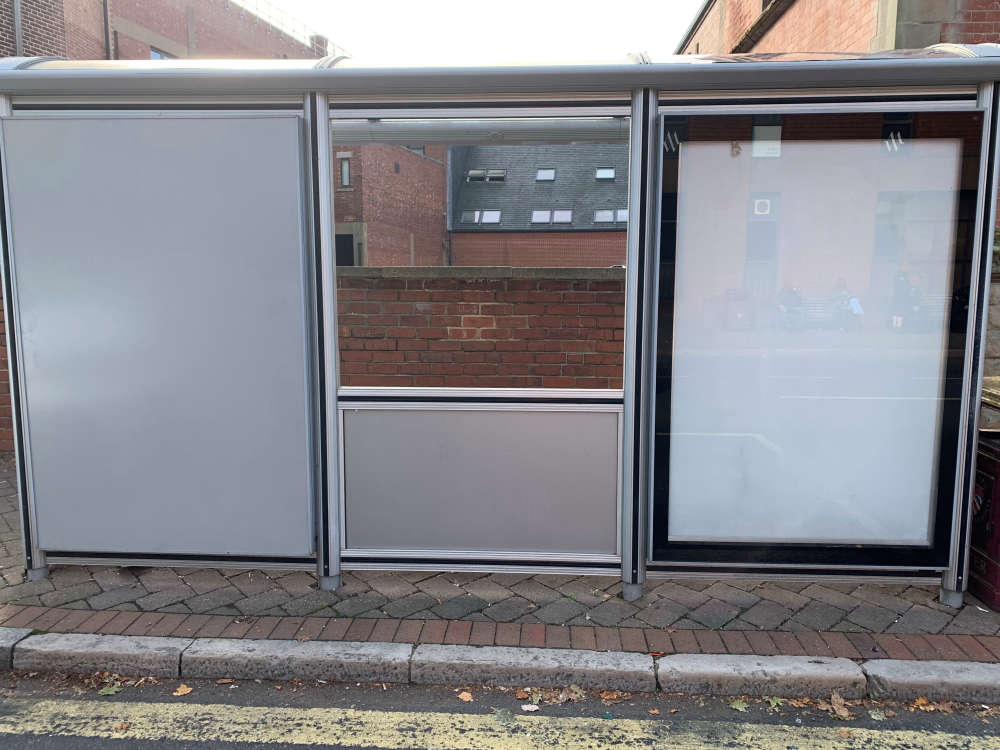
Breakdown company RAC claims only a fraction of Derbyshire County Council’s controlled roads received any form of maintenance during 2023-2024 despite the authority stating it has been targeting repairs with high-tech systems and that there is a need for more Government investment.
Local Democracy Reporter Jon Cooper said that the newly-released analysis of Department for Transport figures by RAC claims only 1.1 per cent of minor roads and just 4.9 per cent of major A roads managed by the county council received any form of maintenance in 2023-24.
But the county council has claimed it has been targeting road repairs with high-tech equipment and systems and despite securing a share of £175m of Government funding for the East Midlands towards highways maintenance and potholes in Derbyshire, Cllr Charlotte Cupit has said there is still a lot more investment needed given the damage to the county’s roads.
RAC head of policy Simon Williams said ‘only a slither of England’s total road network is getting any maintenance attention whatsoever’ and he claimed ‘most councils are in a cycle of merely filling potholes, rather than looking after their roads properly’.
Mr Williams added: “The bigger picture is far more concerning because it still shows a significant decline in the proportion of our roads strengthened, resurfaced or preserved compared to six years ago.
“As the Government has just given councils a record amount of funding to look after their roads, we hope to see a significant improvement in the quality of road surfaces due to the extra maintenance they will be able to carry out in the next 12 months.
“We encourage local authorities to focus on permanent solutions rather than trying to patch pothole-ridden roads that are beyond saving.”
Cllr Cupit, Cabinet Member for Highways Assets and Transport, recently welcomed a share of £175m of Government funding towards highways maintenance and potholes – under a nationwide £1.6bn package announced in December to fix potholes – but she stressed there is still a lot more investment needed given the damage to the county’s roads.
Derbyshire is subsequently set to benefit from some of an allocated £75m as a Highways Maintenance Block via the new East Midlands Combined County Authority to go on road repairs and it will also benefit from a share of £66m of City Region Sustainable Transport Settlements funding also to be received through EMCCA.
But Cllr Cupit has described the Government’s funding announcement in December for the county’s and Nottinghamshire’s road and pothole repairs as ‘smoke and mirrors’ after she claimed most of this money simply reflected a usual maintenance grant.
She explained Derbyshire’s share of the approved £75m will be similar to what the council usually gets and she fears it might be slightly less and she has claimed that it does not take into account reduced funding for the county’s roads from the Government in the 2024-25 financial year.
The council has also stated that constant freezing and thawing followed by rainfall at the start of 2023 led to roads cracking and causing an increase in potholes and carriageway deterioration.
Cllr Cupit said: “In Derbyshire, we’re doing everything we can to invest locally and maximise funding and resources to have as big an impact on improving our roads as possible with what we’ve got – and we’re throwing everything at it.
“We’re trying to focus as far as possible on permanent and lasting repairs and resurfacing as far as we can. This includes using new technology like the recycled tyres pothole repair material but also doing smaller scale resurfacing of pothole hotspots.
“Over the last year we’ve planed out and resurfaced over 200 pothole hotspots and, over the last six months, we’ve done over 3,000 smaller resurfacing patches on over 300 streets across the county.
“Continuing using this approach, the council’s bumper teams will carry out patch resurfacing on at least 500 streets over the next three months. This smaller focus is all on top of our usual large scale road reconstruction and resurfacing, and preventative surface dressing sealing, work.”
In September 2023, the council claimed it had been successfully targeting road repairs with high-tech equipment and systems and in May, 2023, the council confirmed it had fixed as many as 42,036 potholes between January and May, 2023, and claimed a national survey revealed the local authority had fixed more potholes than any other highways authority in the country.
The council also officially agreed in July, 2023, to accept £4.2m of additional Government funding towards highway maintenance and pothole repairs for 2023 and 2024 and it stated that major improvements were targeted on the county’s roads and pavements as part of a previous three-year £120m investment programme.
It also announced the roll-out of a countywide £1m repair programme targeting 124 residential roads to get underway from September, 2023.
But the RAC claims ‘only a slither of England’s total road network is getting any maintenance’ and Mr Williams has called on local authorities to focus on preventing road damage rather than continuously fixing ‘pothole-ridden roads that are beyond saving’.
The RAC claims just three per cent, or 4,894 miles, of council-run roads in England were strengthened, resurfaced or preserved last year and even though this was an 18 per cent increase on the previous year when 4,144 miles of roads received maintenance, it was a 35 per cent decline on 2017-18 when 7,510 miles were improved, according to the RAC.
RAC’s research suggests half of councils in England failed to conduct pothole prevention work on the major roads they administer.
The Government has been so concerned that it is holding back a quarter of a £500m funding uplift for councils until authorities can demonstrate that funding is being used well.
Mike Hansford, Chief Executive of the Road Surface Treatments Association, said: “Preventative road surface treatments offer councils a cost-effective and lower-carbon approach to managing road assets through their life cycle.
“This preventative maintenance approach results in roads being kept in good condition for longer, reduces future pothole formation, and allows local authorities to treat more of their road networks.”
A Department for Transport spokesperson said it wants councils to tackle potholes in ‘the most cost-efficient way’, which is why it is awarding ‘multi-year funding settlements’.
The DfT spokesperson added: “The public deserves to know how their councils are improving their local roads, which is why they will have to show progress or risk losing a quarter of the £500m funding boost.”
Cllr Cupit, who questioned the RAC’s mileage statistics, has previously argued Derbyshire has a diverse geography and a huge highways network with 3,500 miles of road, 2,794 miles of footpaths, 1,182 highways bridges and many other assets, and it is also having to contend with more extreme weather conditions evidenced by a high number of landslips.
Derbyshire County Council aims to invest its share of funding on repairing roads and on works to help prevent landslips on key routes and the £66m CRSTS money for the East Midlands is also to be allocated to road repairs, improvements to highways, and projects to make walking, cycling, and public transport easier in the region in 2025-26.


 Witness appeal after assault in Long Eaton
Witness appeal after assault in Long Eaton
 Warning to check notes as reports of counterfeit cash in Derbyshire
Warning to check notes as reports of counterfeit cash in Derbyshire
 Spruce up for bus shelters in Erewash
Spruce up for bus shelters in Erewash




